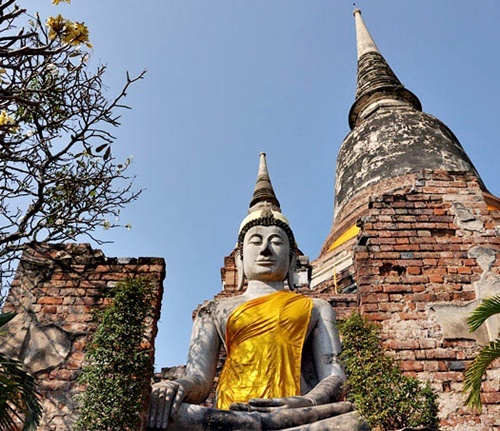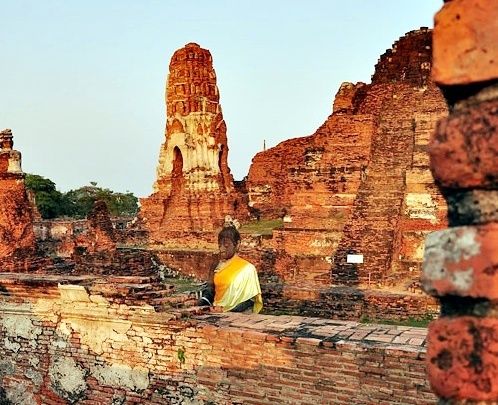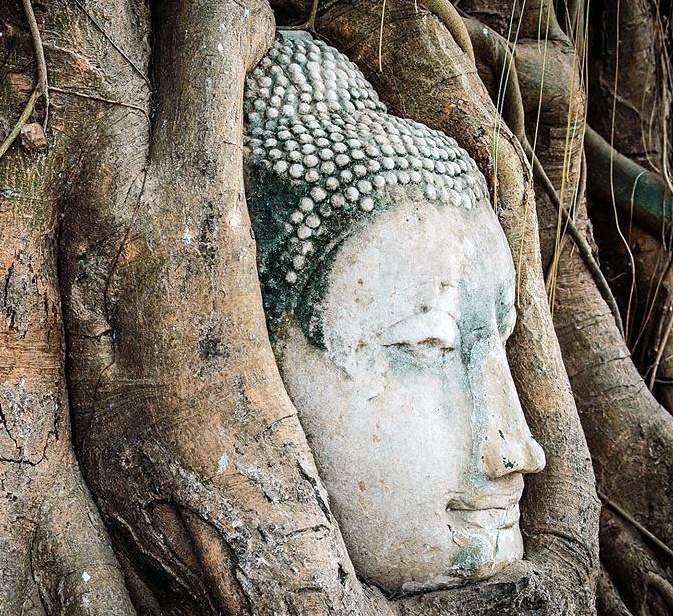

-
Ayutthaya, ThailandDestination: Prestige Destinations
 Travel Guides Description
Travel Guides Description
The ancient city of Ayutthaya, or Phra Nakhon Si Ayutthaya, The Thai capital for 417 years, is one of Thailand's major tourist attractions. Many ancient ruins and art works can be seen in a city that was founded in 1350 by King U-Thong when the Thais were forced southwards by northern neighbours. During the period of Ayutthaya being the Thai capital, 33 Kings of different dynasties ruled the kingdom.
Ayutthaya is 76 kilometers north of Bangkok and boasts numerous magnificent ruins. Such ruins indicate that Ayutthaya was one of Indo - China's most prosperous cities. Phra Nakhon Si Ayutthaya a Historical Park, a vast stretch of historical site in the heart of Ayutthaya city, has been included in UNESCO's list of world heritage since 13 December, 1991.
Ayutthaya covers 2,556 square kilometers, and is administratively divided into 16 districts (Amphoes). It is conveniently accessible due to good roads and a short distance from Bangkok.
The Early Ayutthaya Period King U-Thong or King Ramathibodi I was the first king of the kingdom, empowered by his relative states, such as Suphanburi, Loburi, and Sanburi. Ayutthaya was ruled by the king as absolute monarchy system and feudalism seemed to play an important role through the whole period of the kingdom. The king, with the most powerful in hand, empowered his relatives and high ranked aristocrats to look after the provincial towns far off the city. These cities, on the other hand, being governed by their own rulers, were directly governed and organized by the central government of Ayutthaya. In the reign, of King Boroma-tri-loka-nat [1448 - 1488] the political system of Ayutthaya was reformed. Two powerful administrative ministries were applied and they were used until the last days of Ayutthaya. The Middle Ayutthaya Period In 1569, during the reign of King Mahindrathirat, Ayutthaya was beaten by his enemy, the Burmese and it lost its independence for 15 years. The kingdom was free again in 1584, during the reign of King Naresuan the great when he could drive the Burmese away from the kingdom. The Late Ayutthaya Period In the reign of King Na Rai the great [1656 - 1688], diplomatic and commercial connection policy with western countries was started. At this time. Ayutthaya could learn more about new advanced technology from western countries. such as architectural design and new technique of building construction. These can be seen on ancient ruins found both in Ayutthaya and Lopburi. King Suriyat-Amarin or King Eakatat [1488 - 1767] was the last king of Ayutthaya and it was the second lost of Ayutthaya independence in 1767. The Thonburi Period After King Taksin the great had taken liberty back from Burmese, he established the new capital city of Thailand in Thonburi, which was on the west bank of the Chao Phya River and he asked the people from Ayutthaya including from the other places to settle down in Thonburi. The Rattanakosin Period or The Bangkok Period When King Buddha Yod Fa Chulaloke, or King Rama I succeeded to the throne of Chakri dynasty he and his younger brother started to establish Rattanakosin city or Bangkok in 1692. When the city was nearly completely found, most people both in Thonburi and Ayutthaya integrated to settle down in the new capital city of Thailand while very few were still there. Ayutthaya was left until in the reign of King Rama V, its deterioration and cultural ruins was renovated. It was the first time to realize the important of cultural ruins in Ayutthaya as ancient monument of the nation until today.
At present, Ayutthaya province looks like a mirror that reflects the picture of the past. Because of its cultural significance as outstanding universal value, Ayutthaya historic city was placed in the World Heritage List on December 13, 1991 at Carthage, Tunisia. Besides the Thai Government had approved the Master Plan for conservation and development the historic city in 1993 and the project was started in 1994.How to get there By Car
From Bangkok, one can get to Phra Nakhon Si Ayutthaya by various routes:
* Take Highway No.1 (Phahon Yothin) via Pratu Nam Phra In and turn into Highway No.32, then, turn left to Highway No.309 to Phra Nakhon Si Ayutthaya.
* Take Highway No.304 (Chaeng Watthana) or Highway No.302 (Ngam Wong Wan), turn right into Highway No.306 (Tiwanon), cross Nonthaburi or Nuanchawi Bridge to Pathum Thani, continue on Highway No.3111 (Pathum Thani – Sam Khok – Sena) and turn right at Amphoe Sena into Highway No.3263 to Phra Nakhon Si Ayutthaya.
* Take Highway No.306 (Bangkok–Nonthaburi–Pathum Thani), at Pathum Thani Bridge Intersection, turn into Highway Nos.347 and 3309 via Bang Sai Royal Folk Arts and Crafts Centre, Amphoe Bang Pa-in, to Phra Nakhon Si Ayutthaya.
* Take Expressway No.9 (Si Rat Expressway) via Nonthaburi – Pathum Thani and down to Highway No.1 via Bang Sai Royal Folk Arts and Crafts Centre, turn left into Highway No.3469 towards Bang Pahan and turn right at Worachet Intersection to Phra Nakhon Si Ayutthaya.
By Train
The cheapest and most scenic way of reaching Ayutthaya is by train. It regularly departs from Bangkok's Hualamphong Train Station and stops in Ayutthaya. The trip takes about 2 - 2.5 hrs depending on the type of service. Check time table here: http://www.railway.co.th
By Public BusBuses operate every 20 minutes or so from Bangkok's Northern Bus Terminal (Moh Chit) directly to Ayutthaya. This trip is scheduled to be around an hour and a half, but allow at least two hours for the trip since the buses stop rather frequently and there are often jams on the roads out of/into Bangkok.
In Ayutthaya, the central BKS bus station is on the south side of Thanon Naresuan next to the Chao Phrom Market. songthaews to Bang Pa-In also leave from here. Some 1st-class buses to Bangkok, however, leave from the north side of the road some 500m to the west, on the other side of the khlong (canal); the queue for air-con buses is easy to spot.
By Minibus (Van)Convenient minibus service (can get stuck in traffic, but makes no stops like regular buses) operates from the Victory Monument square in Bangkok. Take BTS Skytrain to the Victory Monument station, and go right on the elevated walkway - keep on it until you cross a large road, then descend - the buses are parked at the side side of the main traffic circle). The cost is usually ~70 baht, takes around 1 hour or 1 hour 20 min. It's quite convenient since you don't have to go to bus terminals (nearby Mochit) but the only problem is that the minibuses don't have much space to put big bags and have to wait until the car is fully filled.
By Cruise BoatCruise boats run up the river from Bangkok, often stopping at Ko Kret and Bang Pa-In along the way. You'll need to book in advance as there are no scheduled services, just trips for tourists. It's a fairly lengthy trip (at least one whole day) and some of the larger boats offer (pricy) overnight tours.




















 Gallery
Gallery



 Remarks
Remarks

